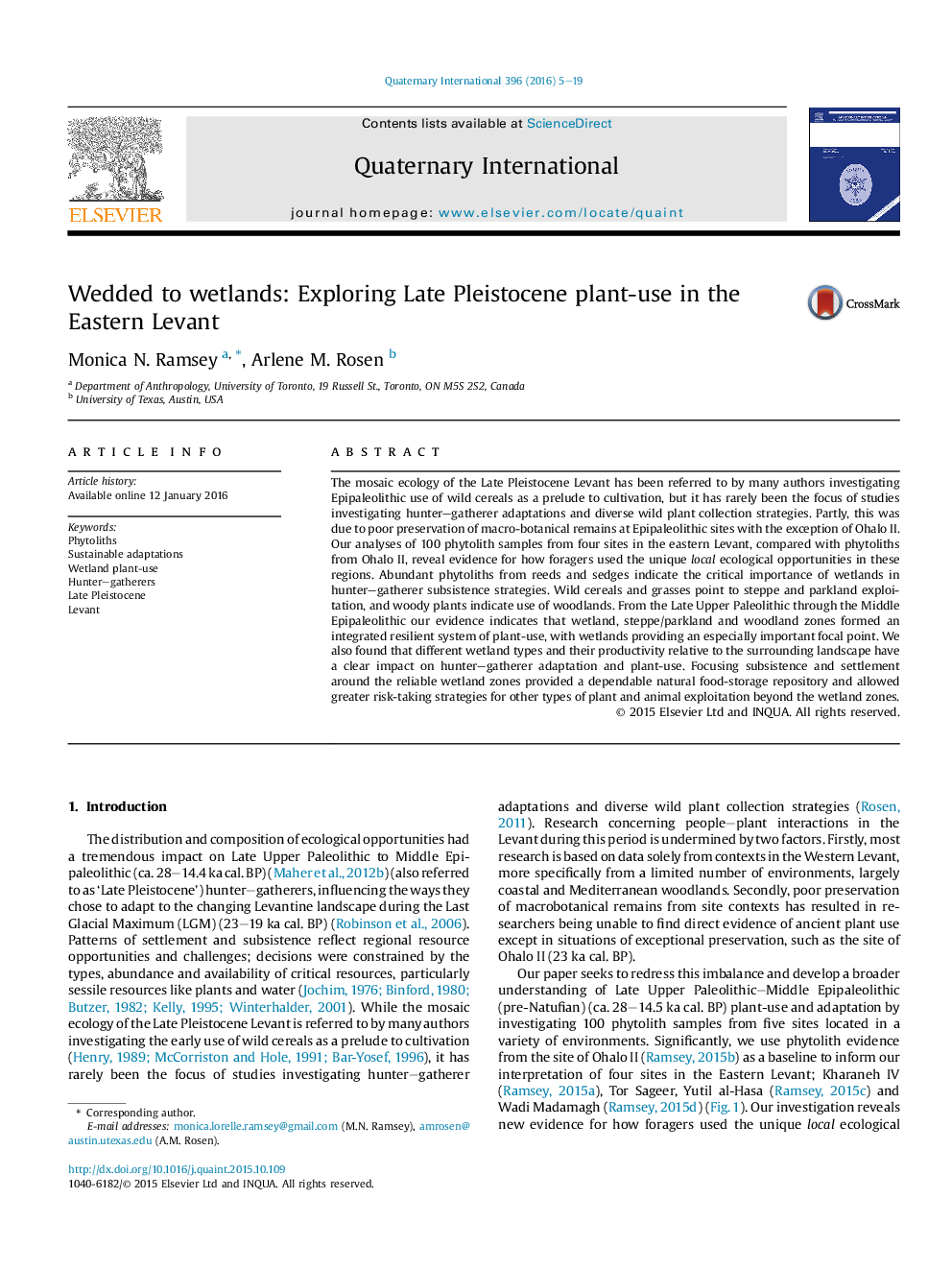| کد مقاله | کد نشریه | سال انتشار | مقاله انگلیسی | نسخه تمام متن |
|---|---|---|---|---|
| 1040236 | 1484102 | 2016 | 15 صفحه PDF | دانلود رایگان |
The mosaic ecology of the Late Pleistocene Levant has been referred to by many authors investigating Epipaleolithic use of wild cereals as a prelude to cultivation, but it has rarely been the focus of studies investigating hunter–gatherer adaptations and diverse wild plant collection strategies. Partly, this was due to poor preservation of macro-botanical remains at Epipaleolithic sites with the exception of Ohalo II. Our analyses of 100 phytolith samples from four sites in the eastern Levant, compared with phytoliths from Ohalo II, reveal evidence for how foragers used the unique local ecological opportunities in these regions. Abundant phytoliths from reeds and sedges indicate the critical importance of wetlands in hunter–gatherer subsistence strategies. Wild cereals and grasses point to steppe and parkland exploitation, and woody plants indicate use of woodlands. From the Late Upper Paleolithic through the Middle Epipaleolithic our evidence indicates that wetland, steppe/parkland and woodland zones formed an integrated resilient system of plant-use, with wetlands providing an especially important focal point. We also found that different wetland types and their productivity relative to the surrounding landscape have a clear impact on hunter–gatherer adaptation and plant-use. Focusing subsistence and settlement around the reliable wetland zones provided a dependable natural food-storage repository and allowed greater risk-taking strategies for other types of plant and animal exploitation beyond the wetland zones.
Journal: Quaternary International - Volume 396, 7 March 2016, Pages 5–19
